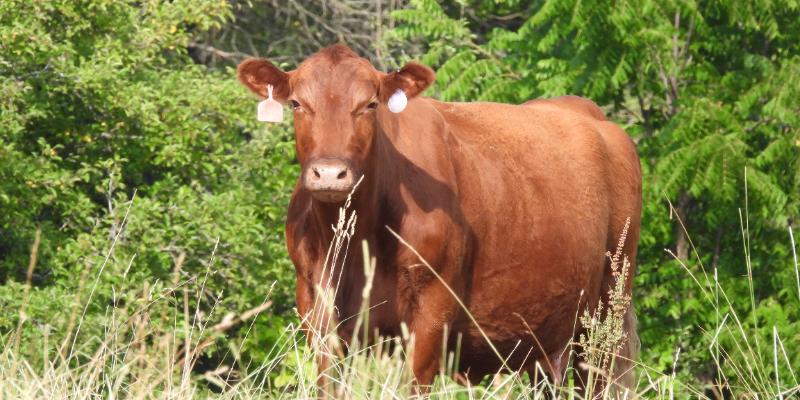-
May 25, 2023

- • Featured • Announcements
Natural Beef over Lab 'Meat'
Beef has been a staple food in many cultures for centuries, providing essential nutrients and flavors that have been enjoyed by generations. However, with the advancement of technology, a new form of “meat” has emerged in recent years – lab-made meat. While lab-made meat is marketed as a sustainable alternative to traditional beef, there are several benefits to eating real beef that cannot be replicated by its lab-made counterpart.
Firstly, real beef is a natural source of essential nutrients that our bodies need to function properly. It is an excellent source of protein, iron, zinc, and vitamin B12. These nutrients are essential for the growth and repair of our bodies, and consuming real beef can provide these nutrients in a form that is easily absorbed and utilized by our bodies. While lab-made meat may be engineered to contain the same nutrients, it is not a natural source, and there is no guarantee that our bodies will be able to utilize them as efficiently.
Secondly, real beef has a distinct taste and texture that cannot be replicated by lab-made meat. This is because real beef comes from animals that have lived and grazed in pastures, developing a unique flavor profile based on their diet and environment. On the other hand, lab-made meat is created in a sterile environment and lacks the complexity of flavor and texture that comes from natural sources. For many people, the taste of beef is an essential part of their culinary experience, and lab-made meat cannot offer the same sensory experience.
Another benefit of real beef is its contribution to local economies and agriculture. Beef production provides jobs for farmers, ranchers, and butchers, supporting local communities and economies. In addition, the land used for grazing cattle can also support other forms of agriculture, such as crop production. Lab-made meat, on the other hand, is created in laboratories and requires large amounts of energy and resources, which can have negative environmental impacts. It also eliminates the need for farmers and ranchers, potentially leading to job losses in the agricultural sector.
Furthermore, real beef is a part of cultural heritage and tradition in many societies. Beef dishes have been passed down through generations, and meat has become a part of the cultural identity of many communities. Lab-made meat, on the other hand, is a new invention that lacks the history and cultural significance of traditional beef. For many people, eating real beef is a way to connect with their heritage and cultural identity.
Lastly, real beef is a sustainable choice when sourced from responsible producers. Cattle raised on pasture-based systems can help sequester carbon in the soil, reducing the impact of greenhouse gas emissions on the environment. Additionally, these animals can be raised using regenerative farming practices that improve soil health and biodiversity. Lab-made meat, while marketed as a sustainable alternative, is still in the early stages of development, and it is unclear what the long-term environmental impacts will be.
In conclusion, while lab-made meat is a promising technology that has the potential to provide sustainable protein options, it cannot replicate the benefits of eating real beef. Real beef is a natural source of essential nutrients, has a distinct taste and texture, supports local economies and agriculture, is part of cultural heritage, and can be a sustainable choice when sourced responsibly. While lab-made meat may be a viable option for some, it cannot replace the unique benefits and experiences that come with eating real beef.
